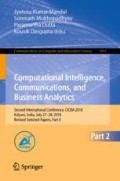Abstract
Value of a project of an organization is primarily determined by two major factors – risk and return. The most important aspect of a business analysis, therefore, lies with the analysis of the risks and their associated returns. The basic objective of an organization is to increase the productivity to grab more market share. But the problem is that market risk is inherent in all projects and, by nature, it is stochastic. It can hardly be avoided but can be mitigated at most through diversification. Through Capital Asset Pricing Model (CAPM), the systematic or un-diversifiable risks can be described and measured by beta, β. In order to mitigate the risk, investments are to be made on a combination of different projects or portfolio of projects rather than a single project. Through β-hedging, a proper hedging strategy can be developed to reduce the systematic risk. But it has also been observed that the concept of CAPM has been plagued by the stochastic nature of the economy. Therefore, in the first part of this work, the systematic risk has been evaluated through time-varying β analysis. According to the results of the hedge performance of individual projects of the portfolio, it will be possible to select/rank the projects according to their risk-return trade-off capacity and in the second part, the Technique for Order Preference using Similarity to Ideal Solution (TOPSIS), one of the most important MCDM techniques, has been merged with CAPM in order to provide a more justified selection procedure of projects considering four more attributes, other than risk, which may confirm a more realistic basis of creating the portfolio for increasing organizational effectiveness.
Access this chapter
Tax calculation will be finalised at checkout
Purchases are for personal use only
References
Jolanta, T., Edmundas, K.Z., Zenonas, T.: Multi-criteria risk assessment of a construction project. Procedia Comput. Sci. 17, 129–133 (2013). https://doi.org/10.1016/j.procs.2013.05.018
Bowman, R.G.: The theoretical relationship between systematic risk and financial (accounting) variables. J. Finan. 34(3), 617–630 (1979). https://doi.org/10.2307/2327430
Hamada, R.: Portfolio analysis, market equilibrium and corporation finance. J. Finan. 24(1), 13–31 (1969). https://doi.org/10.1111/j.1540-6261.1969.tb00339.x
Hamada, R.: The effect of the firm’s capital structure on the systematic risk of common stocks. J. Finan. 27(2), 435–452 (1972). https://doi.org/10.2307/2978486
Markowitz, H.: Portfolio selection. J. Finan. 7(1), 77–91 (1952). https://doi.org/10.1111/j.1540-6261.1952.tb01525.x
Jerry, H.W.R., Tsai, C.L., Tzeng, G.H., Fang, S.K.: Combined DEMATEL technique with a novel MCDM model for exploring portfolio selection based on CAPM. Expert Syst. Appl. 38, 16–25 (2011). https://doi.org/10.1016/j.eswa.2010.05.058
Sharpe, W.F.: Capital asset prices: a theory of market equilibrium under conditions of risk. J. Finan. 19(3), 425–442 (1964). https://doi.org/10.2307/2977928
Lintner, J.: The valuation of risk assets and the selection of risky investments in stock portfolios and capital budgets. Rev. Econ. Stat. 47(1), 13–37 (1965). https://doi.org/10.2307/1924119
Mossin, J.: Equilibrium in a capital asset market. Econometrica 34(4), 768–783 (1966). https://doi.org/10.2307/1910098
Samvedi, A., Jain, V., Chan, F.T.S.: Quantifying risks in a supply chain through integration of fuzzy AHP and fuzzy TOPSIS. Int. J. Prod. Res. 51(8), 2433–2442 (2013). https://doi.org/10.1080/00207543.2012.741330
Zamani, L., Beegam, R., Borzoian, S.: Portfolio selection using data envelopment analysis (DEA): a case of select Indian investment companies. Int. J. Curr. Res. Acad. Rev. 2(4), 50–55 (2014)
Hsu, L.C.: A hybrid multiple criteria decision making model for investment decision making. J. Bus. Econ. Manag. 15(3), 509–529 (2014). https://doi.org/10.3846/16111699.2012.722563
Monjazeb, M., Habibi, M., Sharifi, A.: Performance evaluation and optimal portfolio selection among industries and investment funds. MAGNT Res. Rep. 3(5), 41–46 (2015). 14.9831/1444-8939.2015/3-5/magnt.6
Haghshenas, S.S., Neshaei, M.A.L., Pourkazem, P., Haghshenas, S.S.: The risk assessment of dam construction projects using fuzzy TOPSIS (case study: Alavian Earth Dam). Civil Eng. J. 2(4), 158–167 (2016)
Subya, R., Manoj, M.: Risk assessment of highway construction projects using fuzzy logic and multiple regression analysis. Int. Res. J. Eng. Technol. (IRJET) 4(4), 2344–2349 (2017)
Gifford, S.: Risk and uncertainty. In: Acs, Z., Audretsch, D. (eds.) Handbook of Entrepreneurship Research, vol. 5, pp. 303–318. Springer, New York (2010). https://doi.org/10.1007/978-1-4419-1191-9_12
Rosenberg, B.: The capital asset pricing model and the market model. J. Portfolio Manag. 7(2), 5–16 (1981)
Chandra, P.: The Investment Game – How to Win, 6th edn. Tata McGraw-Hill Publishing Company Limited, New Delhi (1995)
Connor, G.: A unified beta pricing theory. J. Econ. Theory 34(1), 13–31 (1984). https://doi.org/10.1016/0022-0531(84)90159-5
Jahanshahloo, G.R., Lzadikhah, M.: An algorithmic method to extend TOPSIS for decision-making problems with interval data. Appl. Math. Comput. 175(2), 1375–1384 (2006). https://doi.org/10.1016/j.amc.2005.08.048
Author information
Authors and Affiliations
Corresponding author
Editor information
Editors and Affiliations
Rights and permissions
Copyright information
© 2019 Springer Nature Singapore Pte Ltd.
About this paper
Cite this paper
Chakraborty, B., Das, S. (2019). Evaluation Criteria of Project Risk and Decision Making Through Beta Analysis and TOPSIS Towards Achieving Organizational Effectiveness. In: Mandal, J., Mukhopadhyay, S., Dutta, P., Dasgupta, K. (eds) Computational Intelligence, Communications, and Business Analytics. CICBA 2018. Communications in Computer and Information Science, vol 1031. Springer, Singapore. https://doi.org/10.1007/978-981-13-8581-0_13
Download citation
DOI: https://doi.org/10.1007/978-981-13-8581-0_13
Published:
Publisher Name: Springer, Singapore
Print ISBN: 978-981-13-8580-3
Online ISBN: 978-981-13-8581-0
eBook Packages: Computer ScienceComputer Science (R0)

